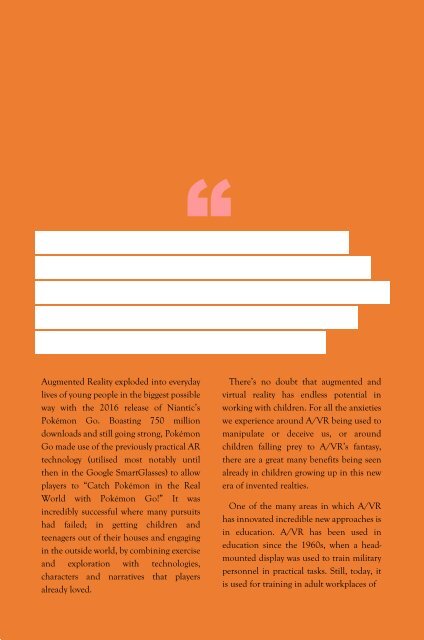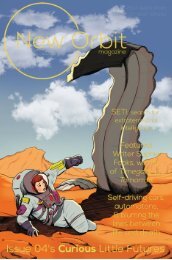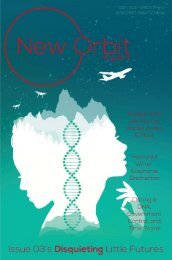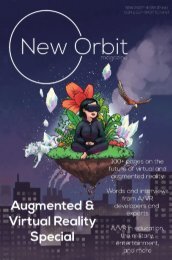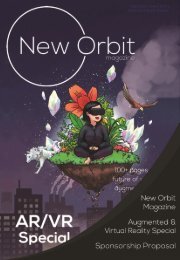Feb 2018 v01 online
((Incomplete formatting))
((Incomplete formatting))
Create successful ePaper yourself
Turn your PDF publications into a flip-book with our unique Google optimized e-Paper software.
“<br />
Augmented Reality exploded into everyday<br />
lives of young people in the biggest possible<br />
way with the 2016 release of Niantic’s<br />
Pokémon Go. Boasting 750 million<br />
downloads and still going strong, Pokémon<br />
Go made use of the previously practical AR<br />
technology (utilised most notably until<br />
then in the Google SmartGlasses) to allow<br />
players to “Catch Pokémon in the Real<br />
World with Pokémon Go!” It was<br />
incredibly successful where many pursuits<br />
had failed; in getting children and<br />
teenagers out of their houses and engaging<br />
in the outside world, by combining exercise<br />
and exploration with technologies,<br />
characters and narratives that players<br />
already loved.<br />
There’s no doubt that augmented and<br />
virtual reality has endless potential in<br />
working with children. For all the anxieties<br />
we experience around A/VR being used to<br />
manipulate or deceive us, or around<br />
children falling prey to A/VR’s fantasy,<br />
there are a great many benefits being seen<br />
already in children growing up in this new<br />
era of invented realties.<br />
One of the many areas in which A/VR<br />
has innovated incredible new approaches is<br />
in education. A/VR has been used in<br />
education since the 1960s, when a headmounted<br />
display was used to train military<br />
personnel in practical tasks. Still, today, it<br />
is used for training in adult workplaces of


